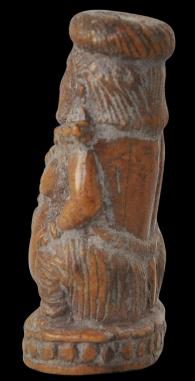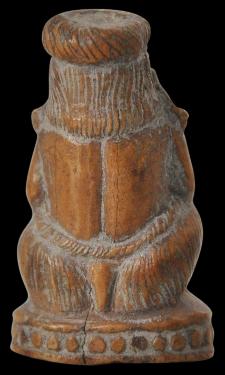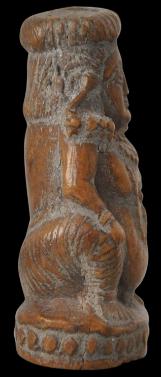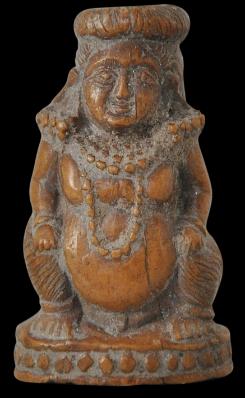
Sunga Shunga Ivory India
Ivory Figure
India
Sunga (Shunga) Period, 200-100BC
height: 3.4cm, width: 2cm, weight: 8g
Carved ivory from India’s Sunga period is relatively rare. Sculptural objects from this period typically are of molded terracotta or stone. This small image shows a figure sitting with a pot belly on a low platform with a pearled border, and with a variety of necklaces, earrings, anklets, bracelets and a waistband. The face is clear and well carved. The figure wears a hat or large cushion-like hairpiece. The composition is typically Sunga.
The piece has the smooth patina that might be expected of a piece of ivory more than 2,000 years old. It is has a golden-brown colour.
The Sunga (or Shunga) empire was a royal dynasty that controlled much of the eastern part of the Indian sub-continent from around 185 BC to 73 BC. It was founded by Pusyamitra Sunga, the commander-in-chief of the last Mauryan ruler, whom he assassinated. Sunga ruled for 36 years. The Empire’s main capital was at Pataliputra. Hinduism was the state religion. Education and the arts flowered during the period. Terracotta images, larger stone sculptures and various important architectural monuments survive as testaments to this. The Sungas were succeeded by the Kanva dynasty around 73 BC.
Provenance:
from a private European collection since around 1970.References:
Lerner, M. & S. Kossak, The Lotus Transcendent: Indian and Southeast Asian Art from the Samuel Eilenberg Collection, The Metropolitan Museum of Art, New York, 1991.
Inventory no.: 1480
SOLD






